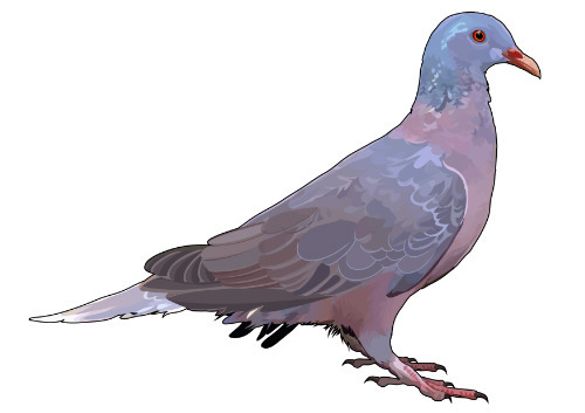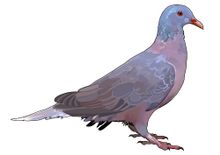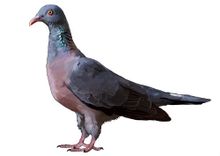 19 May 2017
19 May 2017
Binoculars at the ready, you wait patiently for something to happen. Suddenly, the moment you've been anticipating arrives! A White-tailed Laurel pigeon springs forth from the bushes, just a few yards away. Her feathers are brighter than you imagined, her movements more graceful than expected, her coo like music to your ears. You focus your camera on capturing every moment. Welcome to the wonderful world of birdwatching in La Gomera.
Reconnect with Nature
It's a world that captures us from the first moment: birdwatching connects us to nature from a privileged point of view. In La Gomera, the second smallest Canary Island, spectacular landscapes and diverse ecosystems come together to form this unique experience.
People of any age can participate in birdwatching in La Gomera because it doesn't require any physical effort. Instead, an easy pace and patience are rewarded with pleasant surprises.
La Gomera – A UNESCO Biosphere Reserve
Declared a UNESCO Biosphere Reserve in 2012, La Gomera's high level of conservation allows for a great variety and presence of birds all year round. Birds alone account for over 50 nesting species, many of them exclusive to the Canary Islands, while over one hundred migratory species drop in regularly.
Numerous protected areas on the island ensure a high level of respect for the environment. The majority of these areas are renowned for being places where the best populations of birds are found, including Garajonay National Park, Valle Gran Rey, Los Órganos (Vallehermoso) and the cliffs of Alajeró.
The main types of birds you will be able to observe in La Gomera include the following:
- Common birds: Birthelot's pipit, Canary, Canary Blue Tit, Canary Chiffchaff, Plain Swift
- Forest birds: White-tailed Laurel pigeon, Dark-tailed Laurel pigeon
- Seabirds: Eurasian Thick-knee, Trumpeter Finch
- Marine birds: Cory's Shearwater, Bulwer's petrel
- Raptors: Barbary Falcon, Eurasian Sparrowhawk, Osprey, Common Kestrel
The Laurel Rainforest
La Gomera is home to the world's largest area of Canary Laurel Forest. Garajonay National Park, a UNESCO World Heritage Site, represents over 33% of the the island's total area. It's the perfect starting point to observe birds in their natural habitat.
Going with a bird guide is helpful for those just beginning with this activity. The best places to get information and a guide include the tourist offices in San Sebastián, Playa de Santiago and Valle Gran Rey. To locate the best viewpoints for species unique to Garajonay National Park, it's recommended to consult the information guides at Juego de Bolas Visitor Centre or La Laguna Grande information point.
Look out for two species bird native to La Gomera: the White-tailed Laurel pigeon (Paloma rabiche) and the Dark-tailed Laurel pigeon (Paloma turqué).
The White-tailed Laurel pigeon can be found throughout Garajonay National Park, near steep slopes and in areas of pine forests and low crops. Sometimes they are found in low areas close to the coast. They often breed in trees between March and September, generally laying eggs several times.
The Dark-tailed Laurel pigeon prefers to occupy dense woodland areas. It breeds in trees between October and July, laying one single egg at a time but several times in one season.
Los Órganos and the Cliffs of Alajeró
Another excellent opportunity to discover the birds of La Gomera requires an off-shore excursion to the cliffs of Alajeró or Los Órganos, a volcanic structure resembling a giant church organ that rises 80 metres out of the ocean.
These coastal areas are among the best places to spot Ospreys in La Gomera as they only nest in steep cliffs. It's also common to see many other species of seabirds, such as Yellow-legged Gulls or Cory's Shearwaters, which can be identified by their distinctive flight action of slow wing beats and stiff-winged glides.
Other Protected Conservation Sites
In addition to its designation as a UNESCO Biosphere Reserve, La Gomera's birdwatching value is borne out by the Natura 2000 Network, the European Union's biggest nature conservation scheme.
Under this scheme, the island has 5 Special Protection Areas (SPAs) and 25 Special Areas of Conservations (SACs), as well as the 17 sites belonging to the Canary Islands' own network of Protected Nature Sites. Furthermore, 6 Important Bird Areas (IBAs) provide an idea of La Gomera's special importance for birdlife.
Getting There
Thomson offers holiday packages in La Gomera starting at just £340pp for three nights. See the latest deals at goo.gl/xpu4QE.
ENDS
Notes to editors:
Please contact Natasha Sá Osório, PR MEDIACO, for enquiries: natasha@prmediaco.com or call +44 (0)20 33025560.
Newsroom and Media Gallery: la-gomera.prmediaco.com
About La Gomera
La Gomera is renowned for being the most rural, authentic and visual of the
Canary Islands. Flights run from the UK to Tenerife, where visitors can then
enjoy a short ferry ride to the island within 50 minutes. Alternatively, flights to
Tenerife North are available from the UK. Visitors can then board a 30-minute
connecting flight to La Gomera.
Visit La Gomera's official website for more information.




